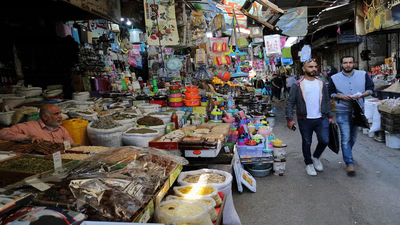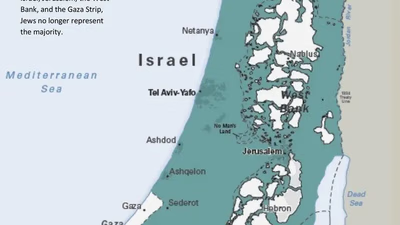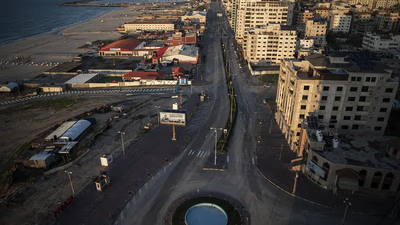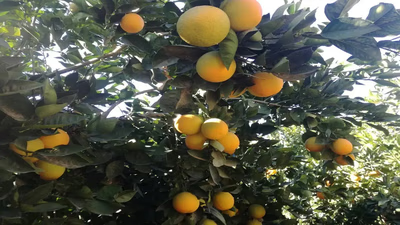
Gaza"s citrus fruits and flowers: vital exports in a challenging market. "
Citrus fruits, strawberries, and flowers are the most important exports of the Gaza Strip . The most important agricultural products of the Gaza Strip are olives, citrus fruits, vegetables, meat, and dairy products. The main imports of tape are food, consumer goods, and construction materials. The Gaza Strip is under siege by its two neighbors, Israel and Egypt, and the people of Gaza are not allowed to enter or leave the region. Israel has also blocked Gaza's airspace and water, and Gaza has even lost the ability to legally export and import.
Before the summer of 2005, the Gaza Strip was under official Israeli military occupation, with 7,700 Israelis living in several towns in Gaza. However, de facto control of Gaza remains in the hands of Israel, which controls Gaza's airspace and waters and has the right to enter Gaza at any time. Hamas ousted Palestinian Authority forces from the region in 2007 after the 2007 Gaza war. Gaza remained under Hamas control until 2014 when with the agreement of the Fatah Hamas movement, a patriotic government was appointed to Prime Minister Rami Hamdallah for all of Palestine (including the West Bank and Gaza Strip ). Palestinians in the Gaza Strip are affiliated with the Israeli government in various areas of life, such as water, electricity, and communication technologies.
The Gush Katif area of Israel was formerly located in the Sindh region, adjacent to Rafah and Khan Yunis, along the southwestern coast of 40 km from the Mediterranean Sea. A controversial buffer zone was established on the northern border with Israel a few months after Israel implemented a plan to unilaterally evacuate the Gaza Strip in December 2005. Part of the 2.5-kilometer border penetrates the Palestinian Authority-controlled area, which used to be part of northern Israel, and is now occupied by Izz al-Din al-Qassam Brigades to fire rockets at Israel. They use.
The Gaza Strip has a temperate climate, with mild, dry winters and hot, dry summers. The surface is flat or flat, and there are dunes along the shore. The highest point is called Abu Awda, which is 105 meters above sea level. Palestine's natural resources include arable land (about one-third of the Gaza Strip is irrigated land). Palestine environmental issues include desertification; Use of saltwater to irrigate agricultural products, freshwater; Wastewater treatment; waterborne diseases; Soil erosion; and the reduction and pollution of groundwater resources. The Gaza Strip is said to be one of the fifteen territories that make up the "cradle of humanity." The area has the oldest remains of large man-made fires and some of the oldest human skeletons.
The city of Gaza is located in the rest of the Gaza Strip next to Yasser Arafat International Airport. It reopened in 1998, but is currently out of operation, with gangs and its support facilities largely destroyed by Israeli forces during the Al-Aqsa Intifada. Following Israel's withdrawal from the Gaza Strip in the autumn of 2005, there were discussions between the Palestinian and Israeli sides over its reopening. So far, Israeli negotiators have not agreed to allow it to reopen.
-

Palestine, with over 4. 2 million residents in the West Bank and 1. 2 million in the Gaza Strip, faces significant economic challenges due to ongoing occupation. The gross domestic product (GDP) of Palestine is approximately $8 billion, ranking it 157th globally, with a growth rate of about 6%. However, this growth is largely driven by the West Bank, while the Gaza Strip"s economy has suffered considerably. The industrial sector in Gaza primarily consists of family-run businesses producing textiles and crafts. Economic output in Gaza declined sharply between 1992 and 1996 due to border closures imposed by Israel, which disrupted established trade relations and led to rising unemployment. Although there was a brief recovery from 1998 until the onset of the Al-Aqsa Intifada in late 2000, subsequent military actions and restrictions severely hampered trade and labor movements.
By 2001, GDP per capita plummeted by 35%, with around 60% of Gaza"s population living below the poverty line. The political landscape further complicates economic recovery efforts as restrictions on work permits for Palestinian workers persist.
-

Palestine"s economy is heavily reliant on international financial aid, which supports the Palestinian Authority and public services. Despite political restrictions impacting trade, Palestine exports agricultural products and crafts to regional markets. The economy faces significant challenges, including Israeli trade restrictions, recurrent hostilities, and internal political divides. Following the 2006 elections, financial aid from international donors has been crucial, with the U. S. and EU providing substantial support. However, economic pressures have led to rising tensions between political factions like Hamas and Fatah. The Palestinian Authority"s budget is largely dependent on external funding, with a notable deficit exacerbated by high government spending.
The GDP growth rate has fluctuated over recent years, reflecting ongoing economic instability due to occupation-related limitations. As of 2023, economic growth is expected to soften further.
-

The history of present-day Palestine is marked by a rich tapestry of civilizations, including Canaanites, Philistines, and various Islamic empires. The region became a significant trade crossroads, especially after the Arab Muslim conquest in the 7th century. The Ottoman Empire controlled Palestine for four centuries until its collapse post-World War I, leading to British mandate and the controversial Balfour Declaration of 1917. This declaration supported a Jewish homeland in Palestine, igniting tensions between Jewish immigrants and the Arab population. The UN"s 1947 partition plan aimed to resolve these tensions by creating separate Jewish and Arab states but was rejected by Arab leaders, leading to the 1948 Arab-Israeli War and significant displacement of Palestinians known as Nakba. Following Israel"s declaration of independence, territorial disputes intensified as Israel expanded beyond UN-designated borders. The Gaza Strip fell under Egyptian control while Jordan administered the West Bank. The Six-Day War in 1967 further complicated matters with Israeli occupation of these territories.
Since then, various peace efforts have sought a two-state solution, yet conflicts persist over borders and statehood aspirations. Present-day Palestine encompasses the West Bank and Gaza Strip, with its future status remaining uncertain amidst ongoing disputes.
-

Gaza, part of the Palestinian territories, primarily connects to the outside world through the Rafah Border Crossing with Egypt. Travelers should remain informed about the evolving political and security landscape, as conditions can change rapidly. Coordination with local authorities, such as the Palestinian Authority or United Nations agencies, is essential for guidance on travel routes and necessary documentation. Freight transport in Gaza is predominantly road-based and privatized, with a significant number of older vehicles in operation. The international trade for Palestinian areas has historically relied on Israeli seaports like Haifa and Ashdod, facing delays due to security checks. Plans for a Gaza Seaport have been hindered by Israeli opposition but include provisions for managing operations and security through a joint protocol. The Erez Border Crossing offers access to Israel and the West Bank but is subject to strict regulations. Alternatively, travelers can exit Gaza through Rafah into Egypt and then proceed to the West Bank via Jordan, which may involve various transportation methods.
-

Citrus fruits, strawberries, and flowers are key exports from the Gaza Strip, alongside olives, vegetables, meat, and dairy products. The region faces significant trade challenges due to ongoing sieges by Israel and Egypt, which restrict movement and access to essential goods. Imports primarily consist of food, consumer goods, and construction materials. The political landscape has shifted since the 2005 Israeli withdrawal, with Hamas gaining control in 2007. This has complicated trade relations further as Israel maintains control over Gaza"s airspace and waters. Environmental issues such as desertification and water resource management also impact agricultural productivity. Despite these challenges, Gaza"s temperate climate supports its agricultural sector. The region"s historical significance as part of the "cradle of humanity" adds to its cultural value but does not alleviate current economic hardships.
Efforts to reopen Yasser Arafat International Airport have stalled due to ongoing negotiations between Palestinian authorities and Israeli officials. "





